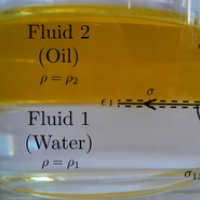Multi-Scale Chemical Engineering

The primary physical foundations of chemical engineering discipline are chemistry and physics. Balance equations help to form a bridge between the chemistry and physics which underpin chemical engineering processes, and mathematics can be used to formulate and solve these equations.
These equations often control variables or optimise parameters which have a significant impact on a given process; this is an important concept in modern chemical engineering, and allows us to tackle multi-scale processes that are of central importance to many chemical engineering applications. These applications can range from length scales ranging from sub-nanometric to kilometric and of time scales ranging from femtoseconds to years.
At the molecular level, the balance equations might incorporate variables like temperature and pressure. At the unit operations level, the key variables may include the flow rate or controller gain. At the manufacturing level, operating costs or overall production rate may be the dominant variables. The chemical engineer then has to move continually over the span of length-scales: from the atomic to the manufacturing-level.
The research undertaken under our Multi-Scale Driven Domain aims to reduce the complexity of processes and phenomena rigorously and systematically, often by developing the required methodologies.
The work undertaken follows a path at the cross-roads between a variety of scientific disciplines: reaction engineering, transfer processes, thermodynamics, statistical mechanics, molecular modelling, applied mathematics and process systems engineering.
